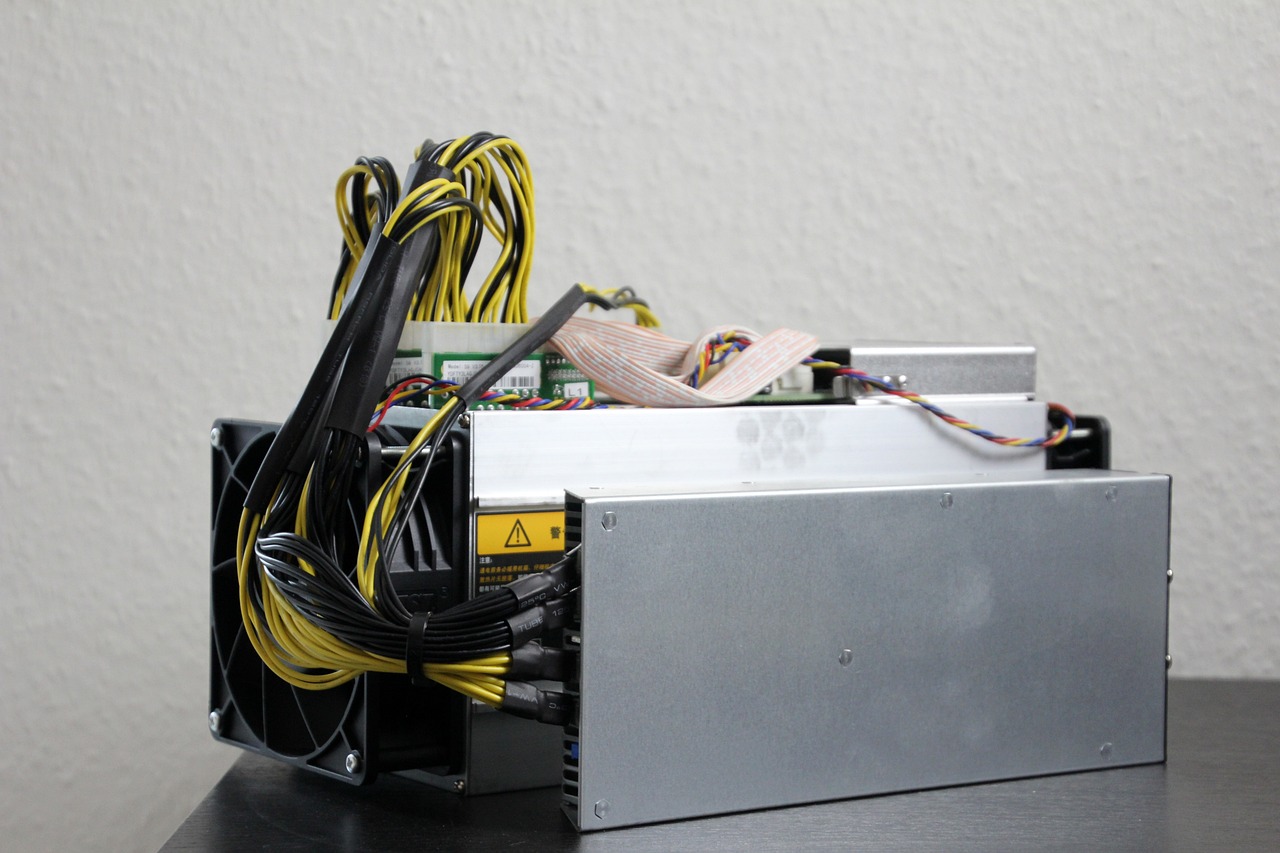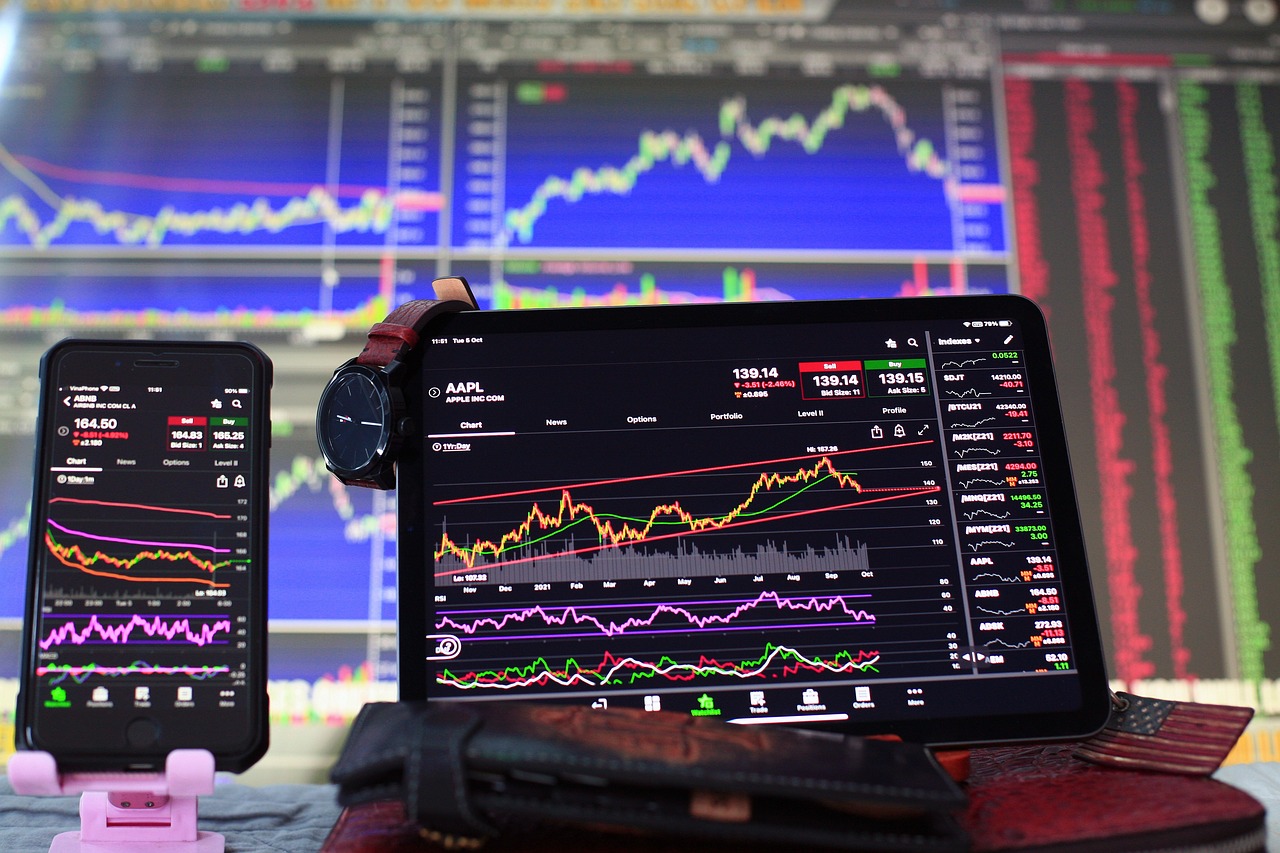Understanding the Basics of Crypto Arbitrage Trading
Welcome to the fascinating world of crypto arbitrage trading! If you’ve ever wondered how traders seem to make profits out of thin air, this is where the magic happens. In essence, crypto arbitrage is all about taking advantage of price differences in cryptocurrencies across various exchanges. Imagine you're at a market where the same apple is priced differently at multiple stalls. If you buy the apple at the cheaper stall and sell it at the more expensive one, you pocket the difference. That’s the core idea behind crypto arbitrage!
But why does this happen in the world of cryptocurrencies? Well, the crypto market is incredibly dynamic and decentralized. Prices can vary significantly from one exchange to another due to factors such as market demand, liquidity, and trading volume. This creates a golden opportunity for traders who are savvy enough to spot these discrepancies. However, it’s not just about finding a gap; it’s also about acting swiftly and efficiently to capitalize on it before the window closes. After all, in the fast-paced world of crypto, time is of the essence!
Now, you might be thinking, "Is it really that simple?" The answer is both yes and no. While the concept is straightforward, the execution can be tricky. Traders must navigate various challenges, including market volatility, which can turn a profitable trade into a loss in the blink of an eye. Additionally, understanding the different types of arbitrage strategies—like spatial, temporal, and triangular arbitrage—can help traders refine their approach and increase their chances of success. Each strategy has its own nuances and requires a different skill set, making the landscape both exciting and complex.
As we dive deeper into this article, we’ll explore the intricacies of each type of arbitrage, the risks involved, and the tools that can help traders maximize their profits. Whether you're a seasoned trader or a curious newcomer, understanding these fundamentals will empower you to navigate the crypto arbitrage landscape with confidence. So, buckle up as we embark on this thrilling journey through the world of crypto trading!
- What is crypto arbitrage? Crypto arbitrage is the practice of buying a cryptocurrency at a lower price on one exchange and selling it at a higher price on another exchange to profit from the price difference.
- Is crypto arbitrage safe? While it can be profitable, crypto arbitrage comes with risks such as market volatility and transaction fees that can eat into profits.
- What tools can help with crypto arbitrage? Traders often use arbitrage bots and price tracking tools to identify and execute arbitrage opportunities more efficiently.

What is Crypto Arbitrage?
Crypto arbitrage is a trading strategy that allows investors to capitalize on the price discrepancies of the same cryptocurrency across different exchanges. Imagine walking into two different stores and finding that the same product is being sold at two different prices; that’s essentially what crypto arbitrage is all about. Traders buy the cryptocurrency at a lower price from one exchange and sell it at a higher price on another, pocketing the difference as profit. This practice is significant in the trading world because it not only provides opportunities for profit but also helps in maintaining price equilibrium across exchanges.
The beauty of crypto arbitrage lies in its simplicity and the accessibility it offers. Unlike traditional investments that might require extensive market knowledge or long-term strategies, arbitrage can often be executed quickly and with minimal risk if done correctly. However, it’s important to note that while the concept is straightforward, the execution can get a bit tricky. Factors such as transaction speed, fees, and market volatility play crucial roles in determining the success of an arbitrage trade.
To illustrate how arbitrage works, consider the following example: Let’s say Bitcoin is priced at $30,000 on Exchange A and $30,500 on Exchange B. A savvy trader would buy Bitcoin from Exchange A and sell it on Exchange B, making a profit of $500 per Bitcoin, minus any associated fees. This scenario highlights the essence of arbitrage — taking advantage of market inefficiencies to earn a profit.
However, it’s not as easy as it sounds. The cryptocurrency market is known for its high volatility, which means that prices can change rapidly within seconds. This volatility can sometimes erase the profit margins that traders rely on. Additionally, transaction fees can eat into those profits, making it essential for traders to factor these costs into their calculations.
In summary, crypto arbitrage is a fascinating trading strategy that leverages price differences across exchanges for profit. While it presents exciting opportunities, traders must navigate various challenges to execute successful trades. Understanding the dynamics of the market, being aware of the risks involved, and having the right tools at your disposal are crucial for anyone looking to dive into the world of crypto arbitrage trading.

Types of Crypto Arbitrage
When it comes to crypto arbitrage, understanding the various strategies available is crucial for traders looking to maximize their profits. Each type of arbitrage offers unique opportunities and challenges, making it essential to grasp their distinct characteristics. Let's dive into the three primary types of crypto arbitrage: spatial arbitrage, temporal arbitrage, and triangular arbitrage.
Spatial arbitrage is perhaps the most straightforward form of arbitrage. It involves buying a cryptocurrency on one exchange where the price is lower and selling it on another exchange where the price is higher. This method capitalizes on the inherent price discrepancies that exist due to market inefficiencies. For example, if Bitcoin is trading at $30,000 on Exchange A and $30,500 on Exchange B, a trader can buy on Exchange A and sell on Exchange B, pocketing a profit of $500 per Bitcoin. However, timing is everything in this game; traders must act quickly before the price gap closes.
Next up is temporal arbitrage, which focuses on the price variations of a cryptocurrency over time on the same exchange. In this scenario, a trader may notice that the price of Ethereum fluctuates throughout the day. By analyzing historical price trends and employing technical analysis, traders can predict when the price will drop and purchase Ethereum at a lower price, only to sell when the price rebounds. This requires a keen understanding of market trends and the ability to make quick decisions based on real-time data.
Lastly, we have triangular arbitrage, which is a bit more complex but can yield significant profits. This strategy involves three different cryptocurrencies and takes advantage of discrepancies in their exchange rates. For instance, if a trader notices that the exchange rate between Bitcoin, Ethereum, and Litecoin is misaligned, they can execute a series of trades to profit from the difference. Here's a simplified example:
| Currency Pair | Exchange Rate |
|---|---|
| BTC/ETH | 0.05 |
| ETH/LTC | 20 |
| LTC/BTC | 0.0025 |
In this scenario, a trader could buy Ethereum with Bitcoin, then trade Ethereum for Litecoin, and finally convert Litecoin back to Bitcoin, profiting from the mispricing. The key to success in triangular arbitrage lies in identifying these discrepancies quickly and executing trades efficiently.
In conclusion, understanding these three types of crypto arbitrage—spatial, temporal, and triangular—can significantly enhance a trader's ability to navigate the volatile cryptocurrency market. Each type has its own set of strategies and risks, but with careful analysis and swift execution, traders can take advantage of these opportunities to boost their portfolios.

Spatial Arbitrage
Spatial arbitrage is a fascinating strategy that allows traders to capitalize on price discrepancies of the same cryptocurrency across different exchanges. Imagine you’re in a bustling marketplace where the same product is sold at varying prices. If you could buy low in one spot and sell high in another, you’d be making money hand over fist! This is essentially what spatial arbitrage is all about in the world of crypto trading.
To effectively engage in spatial arbitrage, traders must first identify the exchanges where the same cryptocurrency is listed. Once they’ve pinpointed these exchanges, the next step is to monitor the prices in real-time. With the rapid fluctuations in cryptocurrency prices, timing is crucial. A trader may find Bitcoin priced at $30,000 on Exchange A and $30,500 on Exchange B. The difference of $500 presents a golden opportunity, but it’s essential to act quickly.
However, spatial arbitrage isn't just about spotting price differences; it also involves understanding the mechanics of each exchange. Traders must consider factors such as liquidity, trading volume, and withdrawal limits. For instance, if Exchange A has a low trading volume, it might take longer to execute a trade, which could result in missing out on the price difference. Therefore, a successful spatial arbitrage trader is not just a quick thinker but also a meticulous planner.
Here are some key steps to effectively execute spatial arbitrage:
- Monitor Multiple Exchanges: Use price tracking tools to keep an eye on various exchanges simultaneously.
- Calculate Potential Profits: Always factor in transaction fees and withdrawal limits before making a trade.
- Execute Quickly: Speed is of the essence; delays can turn a profitable trade into a loss.
It’s also worth noting that while spatial arbitrage can be lucrative, it’s not without its challenges. For example, the cryptocurrency market is notorious for its volatility. A price that seems favorable one moment may shift dramatically in the next. Traders must stay vigilant and be prepared to adapt their strategies accordingly. Additionally, some exchanges might impose restrictions or delays on withdrawals, which can hinder the ability to capitalize on the price difference effectively.
In conclusion, spatial arbitrage is a thrilling aspect of crypto trading that requires a blend of analytical skills, quick decision-making, and a solid understanding of market dynamics. By leveraging the right tools and strategies, traders can navigate this exciting landscape and potentially reap significant rewards. As always, however, it’s essential to conduct thorough research and stay informed about market trends to maximize success.

Temporal Arbitrage
Temporal arbitrage is a fascinating strategy that focuses on the price differences of a cryptocurrency over time within the same exchange. Imagine this: you spot a cryptocurrency, let’s say Bitcoin, that has been fluctuating in price throughout the day. One moment it’s trading at $30,000, and just a few hours later, it dips to $29,500. This is where the magic of temporal arbitrage comes into play. Traders who are quick on their feet can capitalize on these price movements, buying low and selling high, all within the same platform.
The essence of temporal arbitrage lies in timing and market analysis. It requires a keen eye for trends and patterns, as well as a solid understanding of market dynamics. To effectively engage in temporal arbitrage, traders often rely on technical analysis tools that help them predict when prices are likely to rise or fall. This involves studying historical data, chart patterns, and various indicators. For instance, if a trader notices that Bitcoin tends to dip during certain hours and then rebounds, they can plan their trades accordingly, buying during the dip and selling when the price rises again.
However, timing is everything in this fast-paced environment. A trader could miss out on a profitable opportunity simply by hesitating for too long. Moreover, it’s essential to be aware of the market volatility that can impact these strategies. Prices can change rapidly, and what seems like a great opportunity one moment can turn into a loss the next. Therefore, having a robust trading plan and being able to execute trades quickly is crucial for success in temporal arbitrage.
Another critical factor to consider is the impact of market news and events. Major announcements, such as regulatory changes or technological advancements, can cause sudden price shifts. For instance, if a country announces a ban on cryptocurrency trading, prices may plummet across the board. A temporal arbitrage trader needs to stay informed and be ready to adjust their strategies in response to such events.
In addition to market trends and news, traders must also keep an eye on their transaction fees. Even though the price difference might suggest a profitable trade, high fees can eat into potential profits. Thus, it’s advisable to calculate the net gain after accounting for these fees. Here’s a quick example:
| Transaction Type | Price at Purchase | Price at Sale | Transaction Fee | Net Profit |
|---|---|---|---|---|
| Buy | $29,500 | $30,000 | $50 | $450 |
| Buy | $30,000 | $30,500 | $50 | $450 |
As you can see from the table above, even a small price difference can yield a significant profit when executed correctly. However, the key takeaway is that the transaction fee must be factored into the calculations to ensure that the trade remains profitable.
In conclusion, temporal arbitrage presents a unique opportunity for traders willing to put in the time and effort to analyze the market effectively. It’s not just about spotting a price difference; it’s about understanding the underlying factors that influence those prices over time. With the right tools, strategies, and a bit of luck, traders can navigate this thrilling aspect of crypto trading and potentially reap substantial rewards.
- What is the main goal of temporal arbitrage? The main goal is to exploit price differences of a cryptocurrency over time within the same exchange to generate profit.
- How can I identify temporal arbitrage opportunities? Traders can use technical analysis tools and historical price data to identify patterns and trends that indicate potential price movements.
- What risks are associated with temporal arbitrage? Risks include market volatility, sudden price changes, and transaction fees that can affect profitability.
- Are there tools available to assist with temporal arbitrage? Yes, various trading platforms offer technical analysis tools, alerts, and price tracking features to help traders make informed decisions.

Triangular Arbitrage
Triangular arbitrage is a fascinating and somewhat intricate strategy that involves trading three different cryptocurrencies to exploit price discrepancies. Imagine you’re at a bustling market where the same item is sold at different prices by various vendors. You can buy the item at a lower price from one vendor and sell it at a higher price to another, pocketing the difference. This is essentially how triangular arbitrage works, but instead of physical goods, you’re dealing with digital currencies.
To put it simply, triangular arbitrage takes advantage of the relationships between three currencies. For instance, let’s say you have Bitcoin (BTC), Ethereum (ETH), and Litecoin (LTC). If the exchange rates between these currencies are misaligned, you can execute a series of trades that will ultimately lead to more of your initial currency than you started with. The process typically involves three steps:
- Convert BTC to ETH
- Convert ETH to LTC
- Convert LTC back to BTC
By doing this, you capitalize on the price inefficiencies across the markets. However, executing triangular arbitrage isn’t as simple as it sounds. Timing is crucial. You need to act quickly and have a good understanding of the market dynamics at play. Even a slight delay can turn a profitable opportunity into a loss, especially in the fast-paced world of cryptocurrency trading.
Let’s break down how you can identify and execute these trades effectively. First, you need to monitor the exchange rates between the three cryptocurrencies closely. This can be done using price tracking tools that provide real-time data. Once you identify a discrepancy, you’ll want to calculate the potential profit by considering the current exchange rates. For example, if the conversion rates are as follows:
| Currency Pair | Exchange Rate |
|---|---|
| BTC to ETH | 0.03 |
| ETH to LTC | 0.5 |
| LTC to BTC | 0.02 |
In this scenario, you would calculate the profit margin by determining how much BTC you would end up with after executing all three trades. If the final amount of BTC is greater than your initial investment, congratulations! You’ve successfully executed a triangular arbitrage trade.
However, it’s essential to keep in mind that while triangular arbitrage can be lucrative, it also comes with risks. The market can be volatile, and prices can change rapidly, which might affect your expected profits. Additionally, transaction fees on exchanges can eat into your gains, so it’s crucial to factor those in when planning your trades.
In conclusion, triangular arbitrage is a compelling strategy for those willing to dive deep into the world of cryptocurrency trading. With the right tools, knowledge, and a bit of luck, you can navigate this complex landscape and potentially reap significant rewards. Just remember, in the world of crypto, timing is everything!
- What is triangular arbitrage? Triangular arbitrage is a trading strategy that involves exchanging three different cryptocurrencies to exploit price discrepancies between them.
- How do I identify triangular arbitrage opportunities? By monitoring exchange rates between different cryptocurrencies and using price tracking tools to find discrepancies.
- What are the risks associated with triangular arbitrage? Market volatility and transaction fees can significantly impact potential profits, so it's essential to be cautious.

Risks in Crypto Arbitrage Trading
While crypto arbitrage can be an exciting and potentially profitable venture, it is essential to recognize that it is not without its risks. Just like a roller coaster ride, the thrill of making quick profits can easily turn into a stomach-churning drop if you're not careful. Understanding these risks is crucial for anyone looking to navigate the turbulent waters of cryptocurrency trading.
One of the most significant risks in crypto arbitrage trading is market volatility. The cryptocurrency market is notoriously unpredictable, with prices often swinging wildly within short time frames. Imagine trying to catch a wave while surfing; if you're not quick enough, you might miss the perfect opportunity, or worse, wipe out entirely. This volatility can dramatically impact arbitrage opportunities, as the price discrepancies that traders aim to exploit can vanish in the blink of an eye. For instance, if you spot a price difference of $100 between two exchanges but take too long to execute your trade, that opportunity may disappear as market prices adjust.
Another critical aspect to consider is exchange fees. Each time you buy or sell cryptocurrency on an exchange, transaction fees apply. These fees can vary significantly between exchanges and can eat into your profits. For instance, if you're attempting to capitalize on a $50 arbitrage opportunity but the transaction fees amount to $30, your actual profit shrinks to a mere $20. Therefore, it’s essential to factor in these costs when calculating potential returns. Below is a simple table illustrating how fees can impact your profits:
| Scenario | Price Difference | Exchange Fees | Net Profit |
|---|---|---|---|
| Scenario 1 | $100 | $20 | $80 |
| Scenario 2 | $50 | $30 | $20 |
| Scenario 3 | $200 | $50 | $150 |
Moreover, technical issues can pose a significant risk in crypto arbitrage trading. These issues can range from exchange downtime to connectivity problems. Imagine you're in the middle of a race and your shoelaces suddenly untie. If an exchange goes offline or experiences delays, you could miss out on a lucrative trade. Therefore, it's crucial to have contingency plans in place, such as utilizing multiple exchanges or having backup internet connections.
Lastly, regulatory risks cannot be overlooked. The legal landscape surrounding cryptocurrency is constantly evolving, with governments around the world implementing new regulations that can affect trading practices. Just like navigating a maze, one wrong turn could lead to penalties or restrictions that hinder your trading activities. Staying informed about regulations in your jurisdiction is vital to ensure compliance and avoid potential pitfalls.
In summary, while crypto arbitrage trading can offer exciting opportunities for profit, it’s essential to understand and mitigate the associated risks. By staying aware of market volatility, accounting for exchange fees, preparing for technical issues, and keeping up with regulatory changes, you can better position yourself for success in this dynamic trading environment.
- What is crypto arbitrage? Crypto arbitrage is the practice of exploiting price differences of the same cryptocurrency across different exchanges to make a profit.
- Is crypto arbitrage safe? While it can be profitable, it carries risks such as market volatility, exchange fees, technical issues, and regulatory changes.
- How can I minimize risks in crypto arbitrage? You can minimize risks by staying informed, using multiple exchanges, calculating fees accurately, and having backup plans for technical issues.

Market Volatility
Market volatility is one of the most significant factors that can impact crypto arbitrage trading. Imagine you're at a bustling market, and prices of the same fruit vary dramatically from one stall to another. You could make a killing by buying low at one stall and selling high at another. But what happens when the price of that fruit suddenly skyrockets or plummets? This is precisely what happens in the world of cryptocurrency. Prices can fluctuate wildly in a matter of minutes, and this volatility can either create lucrative arbitrage opportunities or wipe out potential profits in an instant.
The nature of cryptocurrencies is such that they are influenced by various factors, including market sentiment, regulatory news, and technological developments. For instance, when a major exchange experiences a security breach, the prices of cryptocurrencies may drop sharply across the board. Conversely, positive news can lead to a surge in prices. As an arbitrage trader, you must be attuned to these market dynamics and be ready to act swiftly. The challenge lies in the fact that the window of opportunity for arbitrage can be incredibly short, sometimes lasting only a few seconds.
To illustrate the impact of market volatility on arbitrage trading, consider the following example:
| Exchange A Price | Exchange B Price | Potential Profit |
|---|---|---|
| $100 | $105 | $5 |
| $100 | $98 | -$2 |
In the table above, you can see that the potential profit from buying on Exchange A and selling on Exchange B is $5. However, if the prices shift suddenly, as shown in the second row, the arbitrage opportunity turns into a loss. This highlights the importance of being aware of market volatility and having a robust strategy in place.
Moreover, it's crucial to understand that market volatility can also lead to liquidity issues. If a trader attempts to execute a large order during a volatile period, they may not be able to buy or sell at the expected prices, resulting in slippage. This can further diminish the profitability of an arbitrage trade. Therefore, a successful arbitrage trader must not only be quick but also have a keen sense of when to enter and exit trades, all while keeping an eye on the broader market trends.
In conclusion, while market volatility can create exciting opportunities for arbitrage trading, it also comes with significant risks. Traders need to stay informed, be prepared for rapid changes, and utilize effective risk management strategies to navigate the turbulent waters of the cryptocurrency market.
- What is crypto arbitrage? Crypto arbitrage is the practice of taking advantage of price discrepancies of the same cryptocurrency across different exchanges to make a profit.
- Is crypto arbitrage safe? While it can be profitable, crypto arbitrage carries risks such as market volatility and exchange fees that traders must consider.
- What tools can I use for crypto arbitrage? Traders often use arbitrage bots and price tracking tools to identify and execute trades more efficiently.
- How do I start with crypto arbitrage? Begin by researching different exchanges, understanding market trends, and using tools to monitor price differences.

Exchange Fees
When diving into the world of crypto arbitrage trading, one cannot overlook the impact of . These fees can significantly affect your bottom line, transforming what might seem like a lucrative opportunity into a less appealing venture. Essentially, every time you buy or sell cryptocurrency on an exchange, you're likely to encounter various fees that can eat into your profits. Understanding these fees is crucial for any trader looking to maximize their gains.
Exchange fees typically come in several forms, including:
- Trading Fees: These are the fees charged by exchanges for executing buy or sell orders. They can be a flat fee or a percentage of the transaction amount.
- Withdrawal Fees: Whenever you transfer your cryptocurrency from an exchange to your wallet, you might incur a withdrawal fee. This fee can vary widely between different exchanges.
- Deposit Fees: Some exchanges charge fees for depositing funds, especially if you’re using credit cards or certain payment methods.
To illustrate how these fees can impact your arbitrage strategy, consider the following hypothetical scenario:
| Exchange | Trading Fee (%) | Withdrawal Fee (BTC) |
|---|---|---|
| Exchange A | 0.1% | 0.0005 BTC |
| Exchange B | 0.15% | 0.0003 BTC |
| Exchange C | 0.2% | 0.0007 BTC |
In this example, if you were to execute an arbitrage trade between Exchange A and Exchange B, you would need to consider both the trading fees and withdrawal fees. If you bought 1 BTC on Exchange A for $10,000 and sold it on Exchange B for $10,100, the trading fees would take a bite out of your profits:
On Exchange A:
Trading Fee: 0.1% of $10,000 $10
Net Profit after Trading Fee: $10,000 - $10 $9,990
On Exchange B:
Trading Fee: 0.15% of $10,100 $15.15
Withdrawal Fee: 0.0003 BTC $3 (assuming BTC is $10,000)
Net Profit after Fees: $10,100 - $15.15 - $3 $10,081.85
So, your total profit from this arbitrage trade would be:
Profit $10,081.85 - $9,990 $91.85
This example highlights how critical it is to factor in when calculating potential profits from arbitrage trading. Even small fees can accumulate quickly, particularly in high-frequency trading scenarios. Therefore, always ensure that you do your due diligence and choose exchanges that offer competitive fee structures.
In conclusion, while the allure of crypto arbitrage trading can be enticing, the reality is that exchange fees can significantly impact your profitability. By being aware of these fees and factoring them into your trading strategy, you can better navigate the complexities of the market and make informed decisions that enhance your chances of success.
- What is the average trading fee for crypto exchanges? Trading fees typically range from 0.1% to 0.25%, but it varies by exchange.
- Can I avoid withdrawal fees? Some exchanges offer fee-free withdrawals for certain cryptocurrencies or for users who hold their native tokens.
- How do I calculate my profits after fees? Always subtract all applicable fees from your total transaction amounts to determine your net profit.

Tools for Crypto Arbitrage
In the fast-paced world of cryptocurrency trading, having the right tools at your disposal can make all the difference between a successful arbitrage opportunity and a missed chance. With the sheer number of exchanges and the fluctuating prices of cryptocurrencies, traders need efficient resources to stay ahead. Luckily, there are a variety of tools designed specifically for crypto arbitrage that can help streamline the process and enhance your trading strategy.
One of the most crucial tools for any crypto arbitrage trader is the arbitrage bot. These automated trading systems can execute trades at lightning speed, taking advantage of price discrepancies before they disappear. Imagine trying to catch a fast-moving train; if you’re not quick enough, you miss it. Arbitrage bots help ensure you’re on that train, executing trades in milliseconds. They can be programmed to monitor multiple exchanges simultaneously, allowing traders to capitalize on arbitrage opportunities without the need for constant manual oversight.
However, while using arbitrage bots can be incredibly beneficial, it's essential to choose a reliable and reputable bot. Not all bots are created equal, and some may have hidden fees or may not execute trades as expected. Therefore, thorough research and testing are vital before fully relying on any automated system. You wouldn't want to drive a car without checking the brakes first, right?
Another key component of successful arbitrage trading is utilizing price tracking tools. These tools enable traders to monitor cryptocurrency prices across various exchanges in real-time. By having access to up-to-the-minute price information, traders can quickly identify discrepancies that may present profitable arbitrage opportunities. Some popular price tracking tools include:
- CoinMarketCap
- CoinGecko
- CryptoCompare
These platforms not only provide price data but often include additional features such as historical price charts, market capitalization, and trading volume statistics, which are invaluable for making informed trading decisions.
Moreover, it’s beneficial to use portfolio management tools to keep track of your investments across different exchanges. These tools can help you manage your assets effectively, ensuring you know where your funds are and how they are performing. Some portfolio management tools even allow you to set alerts for price changes, which can be crucial for timing your trades effectively.
Lastly, it’s worth mentioning the importance of staying informed about market trends and news. Utilizing news aggregators and social media platforms can provide insights into market sentiment and potential price movements. Tools like Twitter, Reddit, and specialized news websites can keep you updated on events that may affect cryptocurrency prices, allowing you to make quicker, more informed decisions.
In summary, the landscape of crypto arbitrage is complex and ever-changing, but with the right tools, traders can navigate it more effectively. Whether it's through the use of automated bots, real-time price tracking, or robust portfolio management systems, leveraging technology is key to maximizing your arbitrage trading potential.
1. What is crypto arbitrage?
Crypto arbitrage is the practice of buying a cryptocurrency on one exchange at a lower price and selling it on another exchange at a higher price to profit from the price difference.
2. Are there risks involved in crypto arbitrage?
Yes, while it can be profitable, risks include market volatility, exchange fees, and the potential for sudden price changes that can affect your trades.
3. Do I need special skills to start crypto arbitrage trading?
While basic knowledge of cryptocurrency trading is beneficial, many tools available today can help streamline the process, making it accessible even for beginners.
4. Can I automate my crypto arbitrage trading?
Absolutely! Using arbitrage bots can help automate the trading process, allowing you to execute trades faster and more efficiently.
5. How do I choose the right arbitrage bot?
Research is key. Look for reputable bots with positive reviews, clear fee structures, and good customer support to ensure a smooth trading experience.

Arbitrage Bots
In the fast-paced world of crypto trading, time is money. This is where arbitrage bots come into play, acting as your digital assistants that can spot and execute trades at lightning speed. Imagine having a highly skilled trader who never sleeps, tirelessly monitoring the markets for price discrepancies. That's precisely what these bots do! By automating the trading process, arbitrage bots can significantly enhance your chances of capitalizing on fleeting opportunities that human traders might miss.
But what exactly are arbitrage bots? Simply put, they are software programs designed to automatically buy and sell cryptocurrencies across different exchanges whenever they detect a price difference. This means you can potentially make a profit without having to sit in front of your computer all day. However, while the idea of using a bot sounds appealing, there are several factors to consider before diving in.
One of the main advantages of using arbitrage bots is their speed and efficiency. In crypto trading, prices can change in the blink of an eye, and manual trading can lead to missed opportunities. Bots can execute trades in milliseconds, ensuring that you can take advantage of price discrepancies before they vanish. Additionally, many bots come equipped with advanced algorithms that allow them to analyze vast amounts of data quickly, identifying trends and patterns that might not be immediately visible to the human eye.
However, it's crucial to choose the right bot for your trading needs. Not all bots are created equal, and some may come with hidden fees or less-than-reliable performance. Here are some key features to look for when selecting an arbitrage bot:
- Reputation: Look for bots that have positive reviews and a proven track record.
- User-Friendly Interface: A good bot should be easy to set up and use, even for beginners.
- Customizable Settings: The ability to tweak parameters can help tailor the bot to your specific trading strategy.
- Support and Updates: Ensure that the bot is regularly updated and that customer support is readily available.
Another important consideration is the cost. While some bots are free, others require a subscription or charge a percentage of your profits. It's essential to weigh the potential returns against the costs involved to ensure that using a bot will be beneficial for your trading strategy.
In conclusion, arbitrage bots can be a powerful tool in your trading arsenal, allowing you to capitalize on price discrepancies with speed and efficiency. However, like any trading strategy, they come with their own set of risks and challenges. By doing your research and choosing the right bot, you can enhance your chances of success in the exciting world of crypto arbitrage trading.
What is an arbitrage bot? An arbitrage bot is a software program that automatically buys and sells cryptocurrencies across different exchanges to exploit price differences.
Are arbitrage bots safe to use? While many bots are reliable, it's crucial to do your research and choose a reputable bot to minimize risks.
Can I make money using arbitrage bots? Yes, arbitrage bots can help you make money by identifying and executing trades quickly, but success depends on market conditions and strategy.
Do I need to be an expert trader to use an arbitrage bot? Not necessarily. Many bots are designed for users of all skill levels, but having a basic understanding of trading concepts is beneficial.

Price Tracking Tools
In the fast-paced world of crypto arbitrage trading, having the right tools at your disposal is crucial for success. are essential for monitoring cryptocurrency prices across various exchanges in real-time. These tools allow traders to quickly identify price discrepancies that can be exploited for profit. Imagine trying to catch a bus without knowing its schedule; similarly, trading without real-time price data can lead to missed opportunities and potential losses. So, what are the best tools out there?
There are a variety of price tracking tools available, each offering unique features and functionalities. Some of the most popular ones include:
- CoinMarketCap: This is one of the most widely used platforms, providing comprehensive data on cryptocurrency prices, market capitalization, and trading volume across different exchanges.
- CoinGecko: Similar to CoinMarketCap, CoinGecko offers an extensive overview of cryptocurrency prices, along with additional metrics like developer activity and community engagement.
- CryptoCompare: This platform provides a detailed comparison of cryptocurrency prices and offers tools for portfolio management, making it easier for traders to track their investments.
- Blockfolio: A mobile app that allows users to track their cryptocurrency investments and receive alerts on price changes, making it a favorite among traders on the go.
Using these tools effectively can significantly enhance your trading strategy. For instance, many of these platforms offer customizable alerts that notify you when a cryptocurrency reaches a certain price point. This feature is invaluable for arbitrage traders who need to act quickly to capitalize on fleeting opportunities. Additionally, some tools provide historical price data, allowing traders to analyze trends over time and make informed decisions.
To illustrate the effectiveness of price tracking tools, consider the following table that compares some key features of popular platforms:
| Tool | Real-time Price Tracking | Alerts | Mobile App | Portfolio Management |
|---|---|---|---|---|
| CoinMarketCap | Yes | No | Yes | No |
| CoinGecko | Yes | Yes | Yes | No |
| CryptoCompare | Yes | Yes | Yes | Yes |
| Blockfolio | Yes | Yes | Yes | Yes |
In conclusion, having the right price tracking tools can make a substantial difference in your crypto arbitrage trading journey. They not only help in identifying profitable opportunities but also aid in managing risks effectively. The world of cryptocurrency is ever-evolving, and staying ahead of the curve requires a keen eye on price movements. So, whether you're a seasoned trader or just starting, investing time in finding the best price tracking tools is a step you won't regret.
1. What is crypto arbitrage?
Crypto arbitrage is the practice of taking advantage of price differences for the same cryptocurrency across different exchanges to make a profit.
2. What are the risks involved in crypto arbitrage?
Risks include market volatility, exchange fees, and the potential for sudden price changes that can affect the profitability of trades.
3. How do price tracking tools help in crypto arbitrage?
Price tracking tools provide real-time data on cryptocurrency prices across multiple exchanges, helping traders identify and act on arbitrage opportunities quickly.
4. Can I use bots for crypto arbitrage?
Yes, arbitrage bots can automate the trading process, allowing for faster execution of trades and potentially increasing profitability.
Frequently Asked Questions
- What is crypto arbitrage trading?
Crypto arbitrage trading is the practice of taking advantage of price differences for the same cryptocurrency across various exchanges. Traders buy low on one exchange and sell high on another, capitalizing on these discrepancies to generate profit.
- What are the different types of crypto arbitrage?
There are three main types of crypto arbitrage: spatial arbitrage, which exploits price differences between exchanges; temporal arbitrage, which focuses on price changes over time within the same exchange; and triangular arbitrage, which involves trading three different cryptocurrencies to take advantage of price variances.
- How can I identify spatial arbitrage opportunities?
To identify spatial arbitrage opportunities, traders can monitor multiple exchanges simultaneously. By keeping an eye on the price of a cryptocurrency across platforms, they can spot discrepancies and act quickly to buy and sell accordingly.
- What are the risks associated with crypto arbitrage trading?
While crypto arbitrage can be profitable, it carries risks such as market volatility, which can lead to sudden price changes, and exchange fees, which can eat into profits. It's essential for traders to factor in these risks when planning their strategies.
- How do exchange fees affect arbitrage trading?
Exchange fees can significantly impact the profitability of arbitrage trades. Traders need to calculate these fees when assessing potential returns to ensure that the price difference is large enough to cover the costs and still yield a profit.
- What tools can assist in crypto arbitrage trading?
Various tools can help traders identify arbitrage opportunities, including arbitrage bots that automate trading processes and price tracking tools that monitor cryptocurrency prices across multiple exchanges. These resources can enhance trading efficiency and effectiveness.
- Are arbitrage bots worth using?
Arbitrage bots can be beneficial as they allow for quicker trade execution, reducing the time between identifying an opportunity and acting on it. However, traders should carefully consider the costs and reliability of these bots before using them.
- What are the best price tracking tools for crypto arbitrage?
Some popular price tracking tools include CoinMarketCap, CoinGecko, and CryptoCompare. These platforms provide real-time price data across various exchanges, making it easier for traders to spot arbitrage opportunities.



















